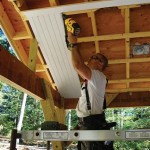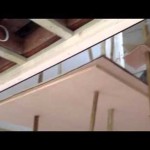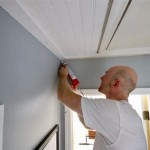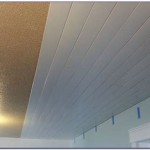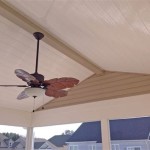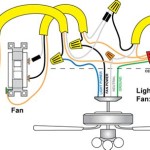Are High Ceilings Bad for Acoustics?
High ceilings are often associated with luxury and grandeur, creating a sense of spaciousness and openness. However, when it comes to acoustics, high ceilings can present significant challenges. While they may contribute to a sense of grandeur, they can also exacerbate sound reflections, leading to undesirable acoustic properties like reverberation and poor sound clarity. Understanding the impact of high ceilings on acoustics is crucial for achieving optimal sound quality in various settings, from concert halls and auditoriums to offices and homes.
Sound Reflection and Reverberation
One of the primary acoustic challenges posed by high ceilings is increased sound reflection. Sound waves travel through the air and bounce off surfaces they encounter. In rooms with high ceilings, sound waves have more space to travel before reaching a surface, leading to longer reflection times. This phenomenon can result in reverberation, an undesirable effect where sound persists after the original sound source has stopped. Reverberation can make it difficult to understand speech, hear music clearly, and create a sense of acoustic discomfort.
The amount of reverberation in a space is measured by its reverberation time (RT60), which is the time it takes for sound to decay by 60 decibels. High ceilings generally lead to longer reverberation times, particularly in large spaces. For instance, a high-ceilinged concert hall may have a reverberation time of several seconds, making it difficult for the audience to discern individual instruments and vocals amidst the overlapping sound reflections.
Sound Clarity and Speech Intelligibility
Reverberation not only affects the overall sound quality but also significantly impacts speech intelligibility. When sound reflections overlap with the original sound, they interfere with the clarity and audibility of spoken words. In rooms with high ceilings and long reverberation times, speech can become muddled and difficult to understand. This is particularly problematic in environments where clear communication is crucial, such as classrooms, conference rooms, and lecture halls.
To improve speech intelligibility in rooms with high ceilings, consider incorporating sound-absorbing materials to reduce reverberation and enhance sound clarity. Acoustical panels, ceiling tiles, and strategically placed furniture can effectively absorb sound energy and minimize reflections. Additionally, consider using microphones and sound reinforcement systems to ensure that sound is projected evenly throughout the room and reaches all listeners clearly.
Sound Isolation and Privacy
Another acoustic concern associated with high ceilings is a potential reduction in sound isolation. High ceilings can create a larger volume of air that sound waves can travel through, making it more challenging to control sound transmission between rooms or to the outside world. This issue is particularly relevant in spaces where privacy and confidentiality are essential, such as offices, recording studios, and hospitals.
To address sound isolation issues related to high ceilings, consider employing soundproofing techniques, including double-wall construction, sound-absorbing insulation, and noise-resistant doors and windows. Additionally, strategically placed acoustic panels can effectively absorb sound energy and prevent it from transmitting through the ceiling to adjacent spaces. By addressing these acoustic challenges, high-ceilinged spaces can achieve optimal sound isolation and maintain privacy.
Designing for High Ceilings: Balancing Aesthetics and Acoustics
When designing spaces with high ceilings, it’s essential to strike a balance between aesthetic considerations and acoustic performance. The desire for open and spacious interiors can be achieved while maintaining good acoustics through strategic design elements and acoustic treatments. For example, incorporating architectural features like balconies, mezzanines, and acoustic diffusers can break up the large volume of air and reduce reverberation. Additionally, incorporating sound-absorbing materials into the ceiling and walls can effectively control sound reflections and improve sound quality.
By carefully considering the impact of high ceilings on acoustics and employing appropriate design and acoustic solutions, architects, designers, and building owners can create spaces that are both visually stunning and acoustically functional. These solutions can enhance speech intelligibility, reduce reverberation, improve sound isolation, and create a more pleasant and comfortable auditory experience for everyone.

Acoustic Strategies For Diffe Ceiling Types How Does My Affect Room Acoustics

Are High Ceilings Good For Acoustics
How To Reduce Echo In A Room With High Ceilings Second Skin

The Effects Of Poor Acoustics Illuminated Integration

Examples Of Good A And Bad B Ceilings For Room Acoustics In Scientific Diagram

Guide To Room Acoustics Poor Resonics

Guide To Room Acoustics Poor Resonics

When Bad Acoustics Happen To Good Workplaces

Acoustical Ceiling Tiles Ceilume

How To Reduce Echo In A Large Room With High Ceilings Range Of Sounds
Related Posts

